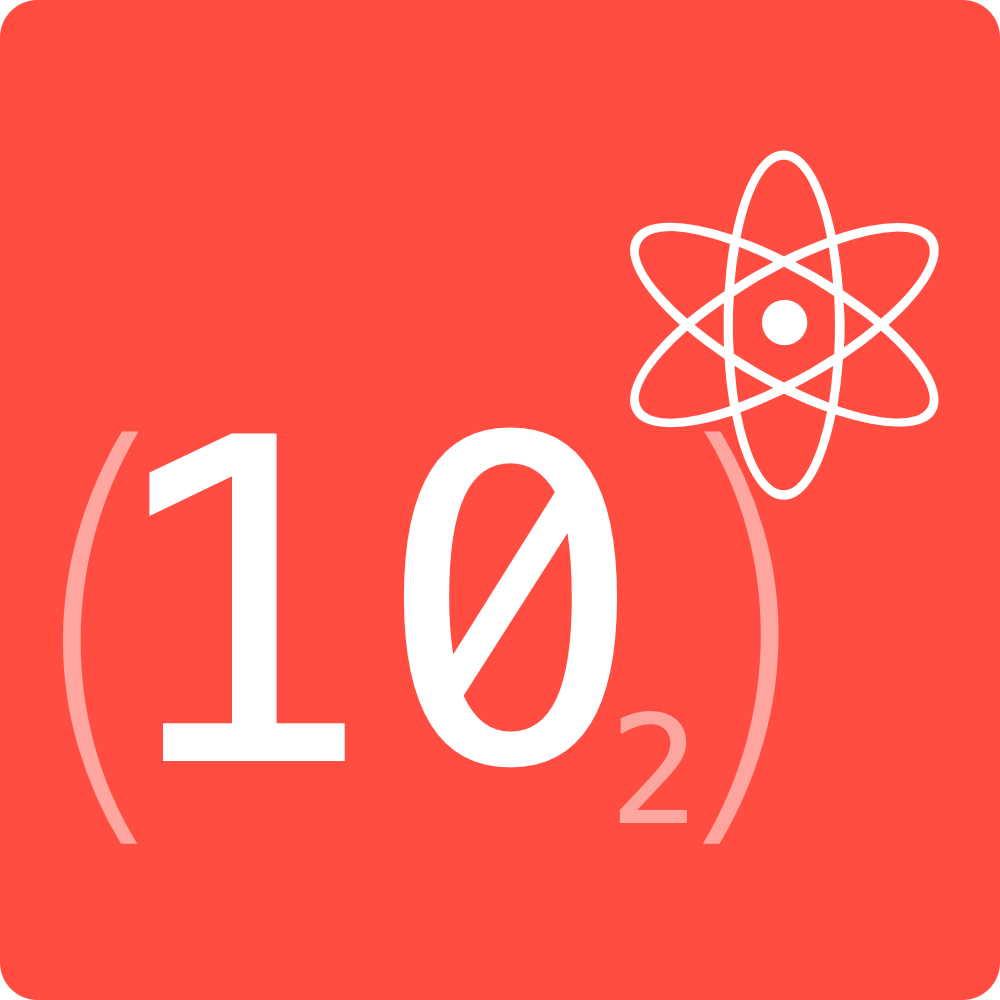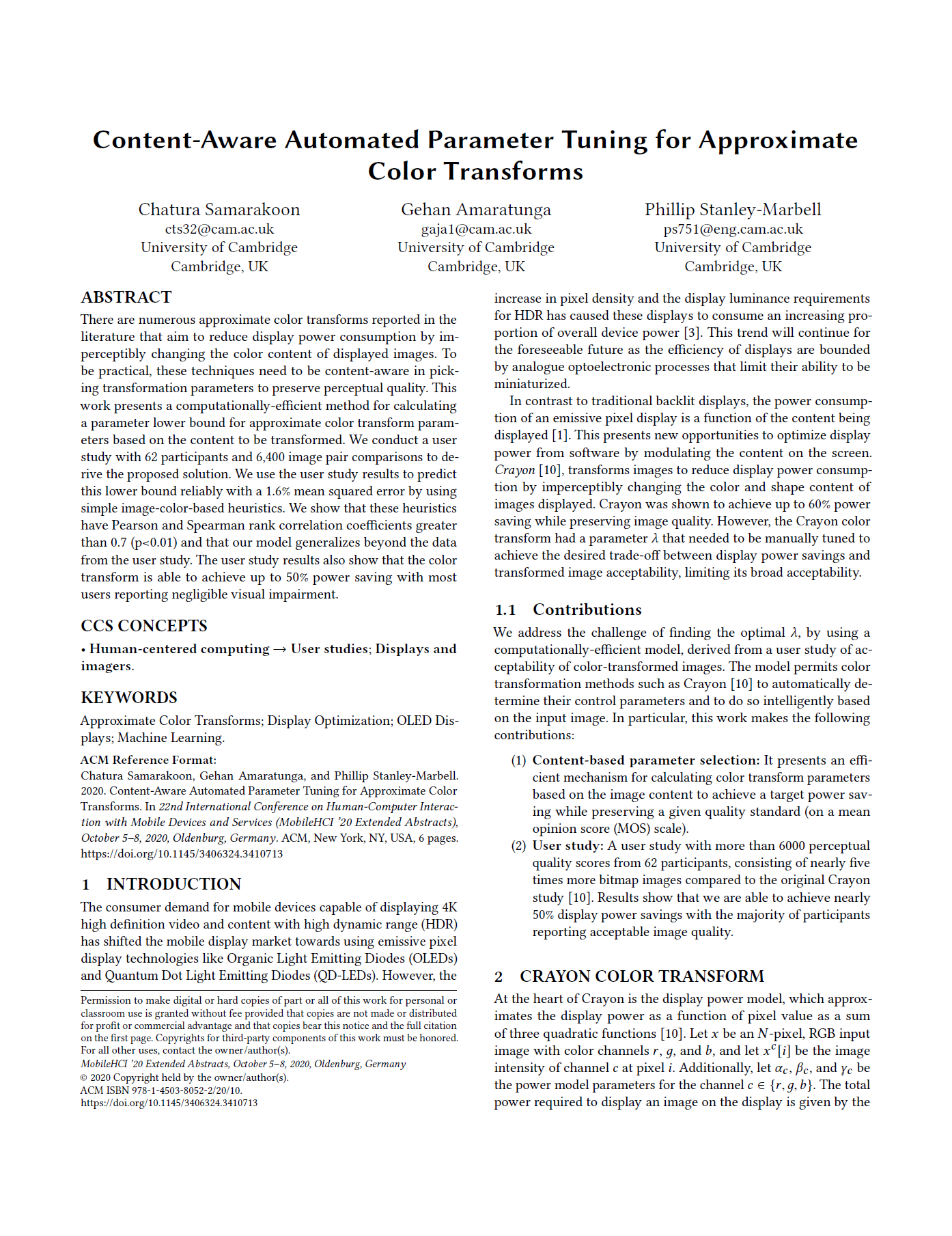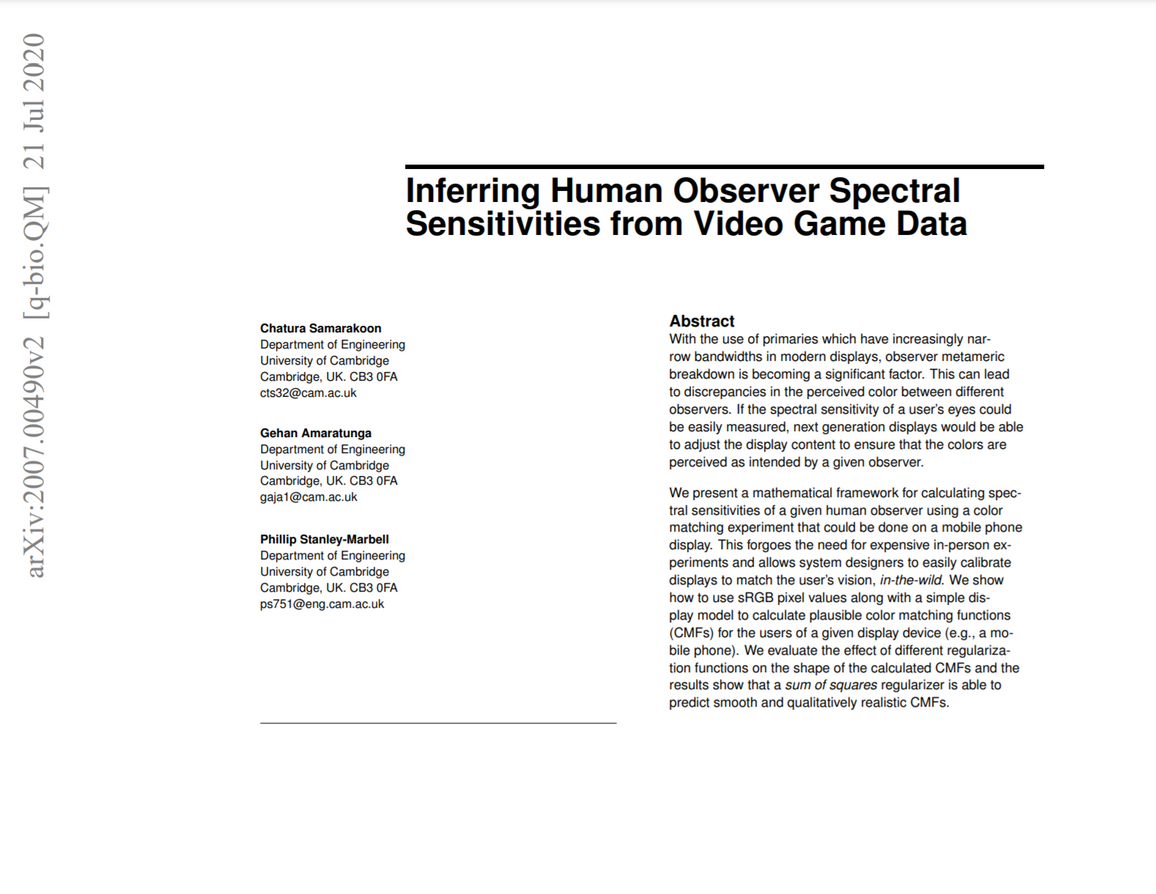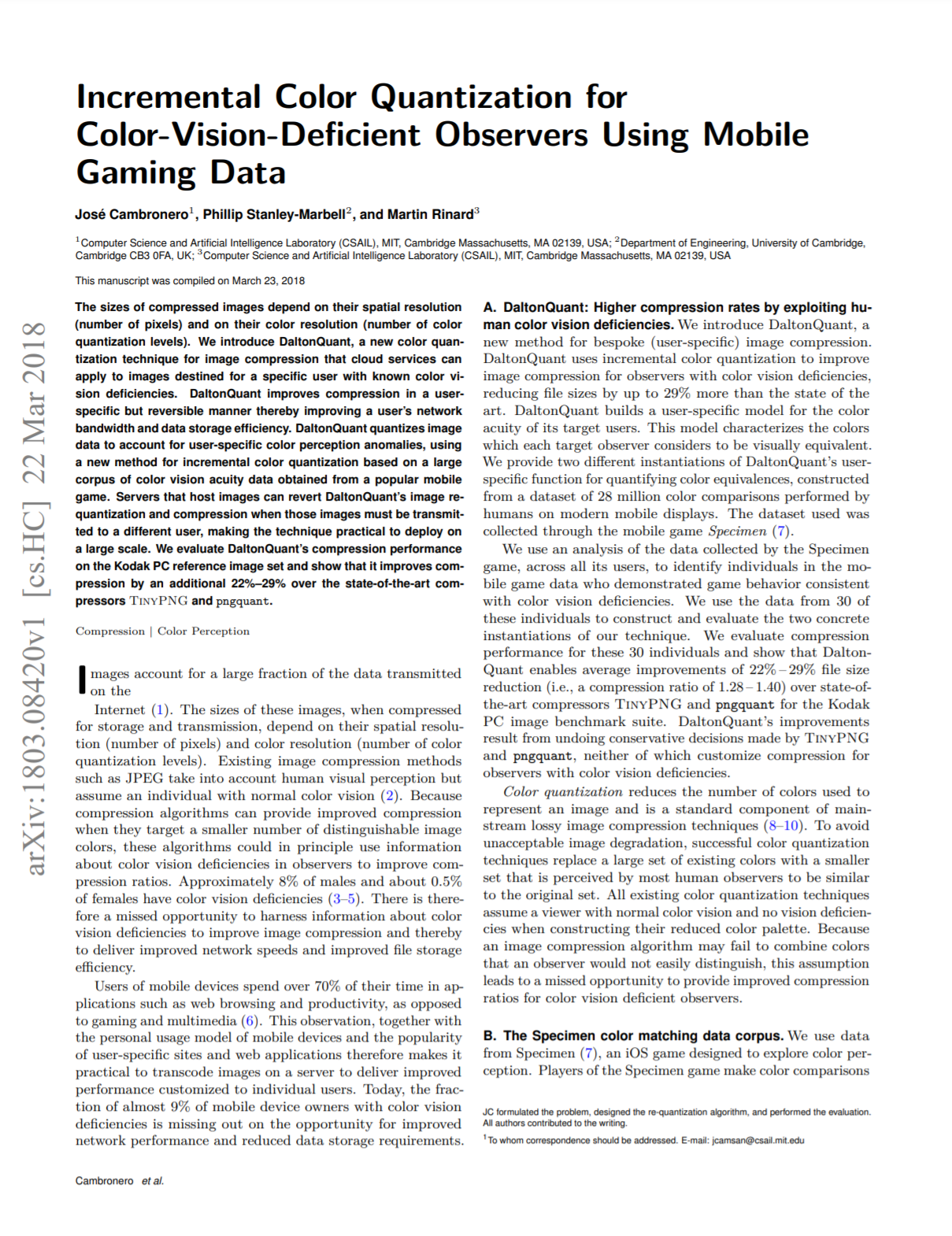Perceived-Color Approximation Transforms for Programs that Draw
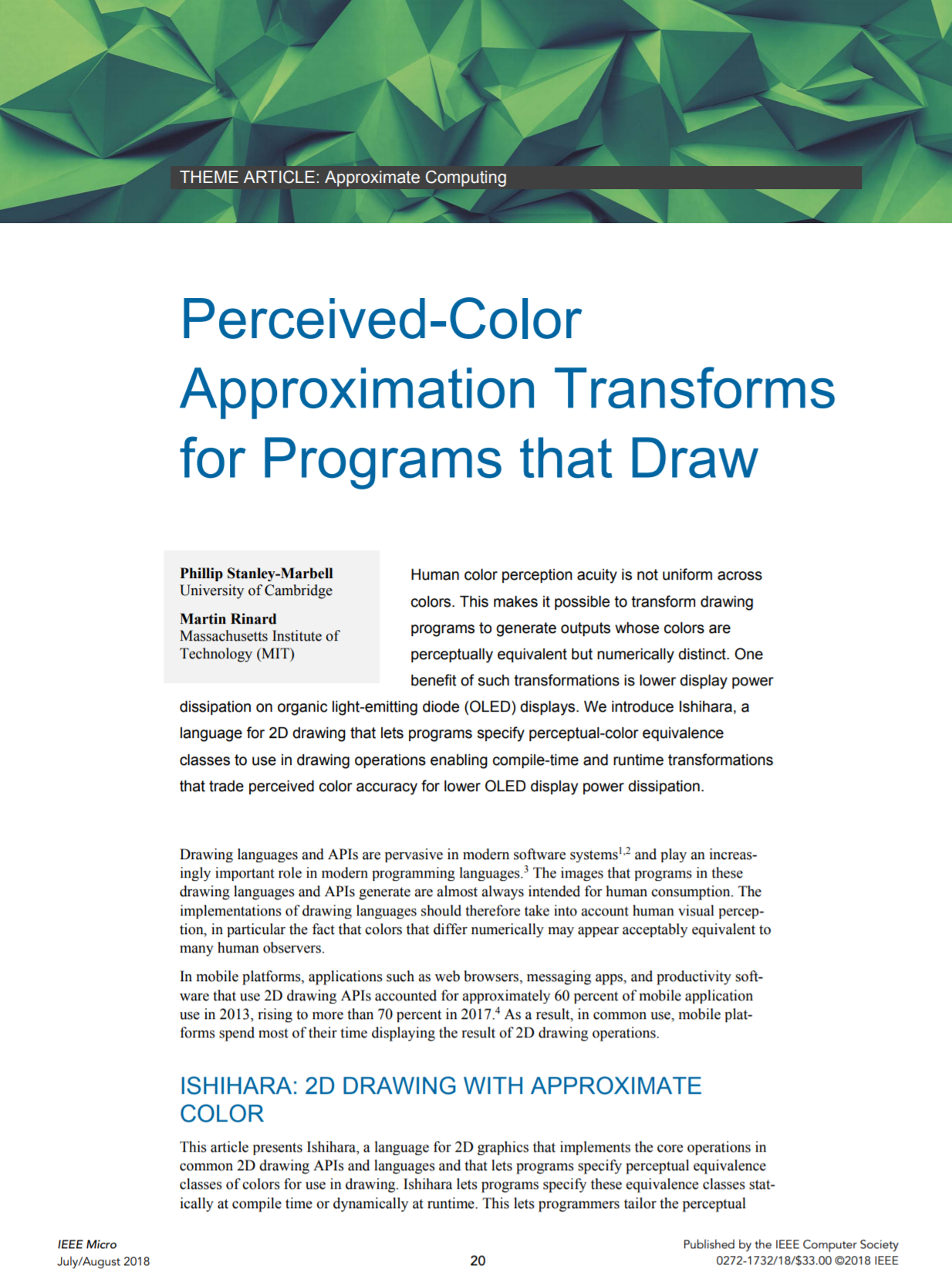

Abstract
Human color perception acuity is not uniform across colors. This makes it possible to transform drawing programs to generate outputs whose colors are perceptually equivalent but numerically distinct. One benet of such transformations is lower display power dissipation on organic light-emitting diode (OLED) displays. We introduce Ishihara, a language for 2D drawing that lets programs specify perceptual-color equivalence classes to use in drawing operations enabling compile-time and runtime transformations that trade perceived color accuracy for lower OLED display power dissipation.
Cite as:
P. Stanley-Marbell and M. Rinard, "Perceived-Color Approximation Transforms for Programs that Draw," in IEEE Micro, vol. 38, no. 4, pp. 20-29, Jul./Aug. 2018, doi: 10.1109/MM.2018.043191122.
BibTeX:
@ARTICLE{8430618,
author={Stanley-Marbell, Phillip and Rinard, Martin},
journal={IEEE Micro},
title={Perceived-Color Approximation Transforms for Programs that Draw},
year={2018},
volume={38},
number={4},
pages={20-29},
doi={10.1109/MM.2018.043191122}
}
